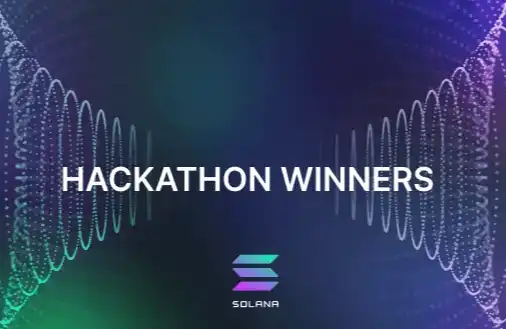Is VeChain (VET) a Buy for 2025–2031? A Deep Dive into Blockchain’s Supply Chain Revolution
- VeChain (VET) targets long-term growth through supply chain solutions, institutional adoption, and a projected 32.7% CAGR in its market through 2032. - Technical indicators show a $0.0248 breakout with bullish momentum, supported by Franklin Templeton and BitGo partnerships, though short-term volatility persists. - Real-world applications with Walmart, BMW, and healthcare initiatives highlight VET’s utility in traceability, anti-counterfeiting, and ESG compliance. - Market share growth, $192.93B 2030 ind
VeChain (VET) has emerged as a compelling candidate for long-term investment in the blockchain space, driven by its strategic focus on real-world supply chain solutions and institutional adoption. As global supply chains grapple with inefficiencies, counterfeiting, and sustainability demands, VET’s dual-token model and enterprise-grade infrastructure position it to capitalize on a market projected to grow at a 32.7% CAGR through 2032 [1]. This analysis evaluates VET’s technical indicators, real-world utility, and competitive positioning to determine its viability as a buy for 2025–2031.
Technical Momentum and Price Projections
VET’s recent technical performance reflects a mix of optimism and caution. In early August 2025, the token broke above the $0.0248 resistance level, forming a rising channel pattern supported by a bullish MACD histogram and a RSI of 51.2 [1]. This breakout coincided with institutional adoption, including Franklin Templeton’s integration of VET into its tokenized treasury fund and BitGo’s custody solutions, signaling growing confidence in the asset [1]. However, a failed attempt to breach $0.02566 and a 53.75% drop in trading volume highlight short-term volatility [1].
Analysts project VET could reach $0.05 by year-end 2025, with further potential to surpass $0.10 in 2026 and $0.50 by 2030 [4]. These forecasts are underpinned by the Hayabusa Mainnet upgrade, which enhances scalability, and cross-chain expansion via Wanchain, connecting VET to 42 blockchains [2]. On-chain metrics, such as the 7-day EMA remaining above the 30-day EMA, suggest mid-term support, though a close below $0.02480 could test $0.02381 [1].
Real-World Utility and Enterprise Partnerships
VeChain’s value proposition lies in its ability to address real-world supply chain pain points. The platform has partnered with global leaders like Walmart China and BMW to enhance transparency in product tracking and authenticity verification [1]. For instance, Walmart’s blockchain-based traceability system allows customers to scan product packaging and access detailed information about a product’s origin, inspection reports, and logistics journey [2]. This system, combined with IoT integration, ensures real-time monitoring of perishable goods, reducing waste and improving food safety [1].
In healthcare, VeChain’s E-Hcert App, developed with iDante, provides GDPR-compliant storage for medical records and enables secure sharing of vaccine certificates via QR codes [2]. The platform also supports pharmaceutical supply chains by tracking drug origins and preventing counterfeiting [2]. Additionally, VeChain’s Biosphere initiative leverages blockchain and IoT to monitor carbon credits and optimize resource usage, aligning with ESG mandates [4].
VeChain’s dual-token system (VET and VTHO) further stabilizes transaction costs, making it attractive for enterprises seeking predictable expenses [5]. The 2025 implementation of a 100% burn rate for VTHO adds a deflationary mechanism, potentially boosting VET’s value over time [4].
Competitive Positioning and Market Share
VeChain distinguishes itself from competitors like IBM Food Trust and Hyperledger by expanding beyond logistics into sectors like healthcare and agriculture [2]. IBM Food Trust, while effective in food safety, focuses narrowly on traceability, whereas VeChain’s Proof of Authority (PoA) consensus model offers high transaction speeds and low energy consumption, ideal for enterprise-grade solutions [3]. Hyperledger’s open-source flexibility is offset by its complexity, whereas VeChain’s user-friendly infrastructure appeals to businesses prioritizing scalability [1].
VeChain’s market share in the blockchain supply chain sector is bolstered by its $2.23 billion market cap and strategic partnerships with institutions like Franklin Templeton and Crypto.com [4]. The platform’s Renaissance upgrades, including EVM compatibility and MiCAR compliance, have attracted developers and enterprises, further solidifying its position [4]. Analysts project the blockchain supply chain market to grow from $2.04 billion in 2024 to $3.27 billion in 2025, with VeChain poised to capture a significant portion due to its real-world applications [3].
Financial Metrics and Institutional Adoption
VeChain’s enterprise revenue is driven by contracts with luxury brands, pharmaceuticals, and agriculture sectors, enhanced by its Stargate protocol updates [4]. The platform’s collaboration with DNV on digital product passports and VeTonsberg’s anti-counterfeit measures in high-value industries underscores its utility [4]. Institutional adoption, including tokenizing Franklin Templeton’s U.S. Government Money Fund (FOBXX) shares, has unlocked 24/7 liquidity and low-cost settlements, attracting institutional investors [4].
The blockchain supply chain market’s projected growth to $192.93 billion by 2030 [1] positions VeChain to benefit from increasing demand for transparency and traceability. With a current price of $0.028275 and a 30-day growth of 19.61% [5], VET’s fundamentals and technical indicators suggest a strong case for long-term investment.
Conclusion
VeChain’s confluence of technical momentum, real-world utility, and institutional adoption makes it a compelling buy for 2025–2031. While short-term volatility persists, the platform’s focus on supply chain innovation, regulatory compliance, and cross-chain interoperability aligns with long-term growth trends. As enterprises increasingly prioritize transparency and sustainability, VET’s role in reshaping global supply chains could drive its price toward the projected $0.50 by 2030 [4]. Investors seeking exposure to blockchain’s next frontier should consider VET as a strategic addition to their portfolios.
**Source:[1] Latest VeChain (VET) Price Analysis [2] VeChain (VET): A Confluence of Technical Breakout and ... [3] VeChain Review 2025: Why VET has Potential! [4] VeChain (VET): Use Cases, Tokenomics & 2025 Outlook [5] VeChain Price Analysis 2025: Investment Prospects and
Disclaimer: The content of this article solely reflects the author's opinion and does not represent the platform in any capacity. This article is not intended to serve as a reference for making investment decisions.
You may also like
XRP sinks below $2 despite $1B in ETF inflows: How low can price go?

Beyond Trading: A Look at Star New Projects and Major Updates in the Solana Ecosystem
The Solana Breakpoint 2025 conference was truly spectacular.

Quick Look at the 33 Winning Projects of the Solana Breakpoint 2025 Hackathon
Over 9,000 participants formed teams and submitted 1,576 projects, with a total of 33 projects winning awards. All of them are top industry seed projects selected from hundreds.

WEEX Labs: The Next Chapter for Memecoin, the Era of Flash Trends
In the era of rapid trends, memecoins have begun to shift from being a "joke" to becoming a "cultural index."
